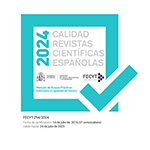Die Ästhetik der Schoah in Elfriede Jelineks Die Kinder der Toten und Neid. Privatroman
Abstract
Jelineks Romane Die Kinder der Toten und Neid. Privatroman erinnern an das dunkle Kapitel in der österreichischen Geschichte, nämlich an den „Anschluss“ im März 1938 und die Involviertheit von Österreichern/innen an den Massenverbrechen im Nationalsozialismus.
In diesem Beitrag werden Jelineks Erzähltechniken zur kritischen Darstellung einer Schoah-Ästhetik in den ausgewählten Romanen herausgearbeitet: die Neigung zur abstrakten und unpräzisen Statistik, die Einschübe in die Romanhandlungen, die einer Darstellung der Zeit des Austrofaschismus und des Nationalsozialismus dienen. Anhand der Symbolisierung der Opfer und der Täter/innen wird sowohl die von der Schoah hinterlassene Leere im Gedächtnis gefüllt als auch die Abwesenheit der Opfer repräsentiert.
Downloads
##submission.format##
Licenza
La Revista de Filología Alemana, para fomentar el intercambio global del conocimiento, facilita el acceso sin restricciones a sus contenidos desde el momento de su publicación en la presente edición electrónica, y por eso es una revista de acceso abierto. Los originales publicados en esta revista son propiedad de la Universidad Complutense de Madrid y es obligatorio citar su procedencia en cualquier reproducción total o parcial. Todos los contenidos se distribuyen bajo una licencia de uso y distribución Creative Commons Reconocimiento 4.0 (CC BY 4.0). Esta circunstancia ha de hacerse constar expresamente de esta forma cuando sea necesario. Puede consultar la versión informativa y el texto legal de la licencia.










